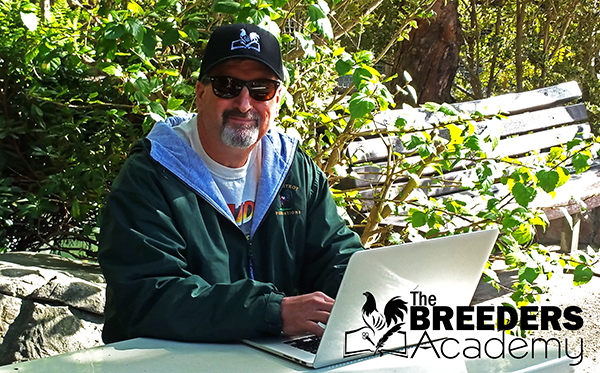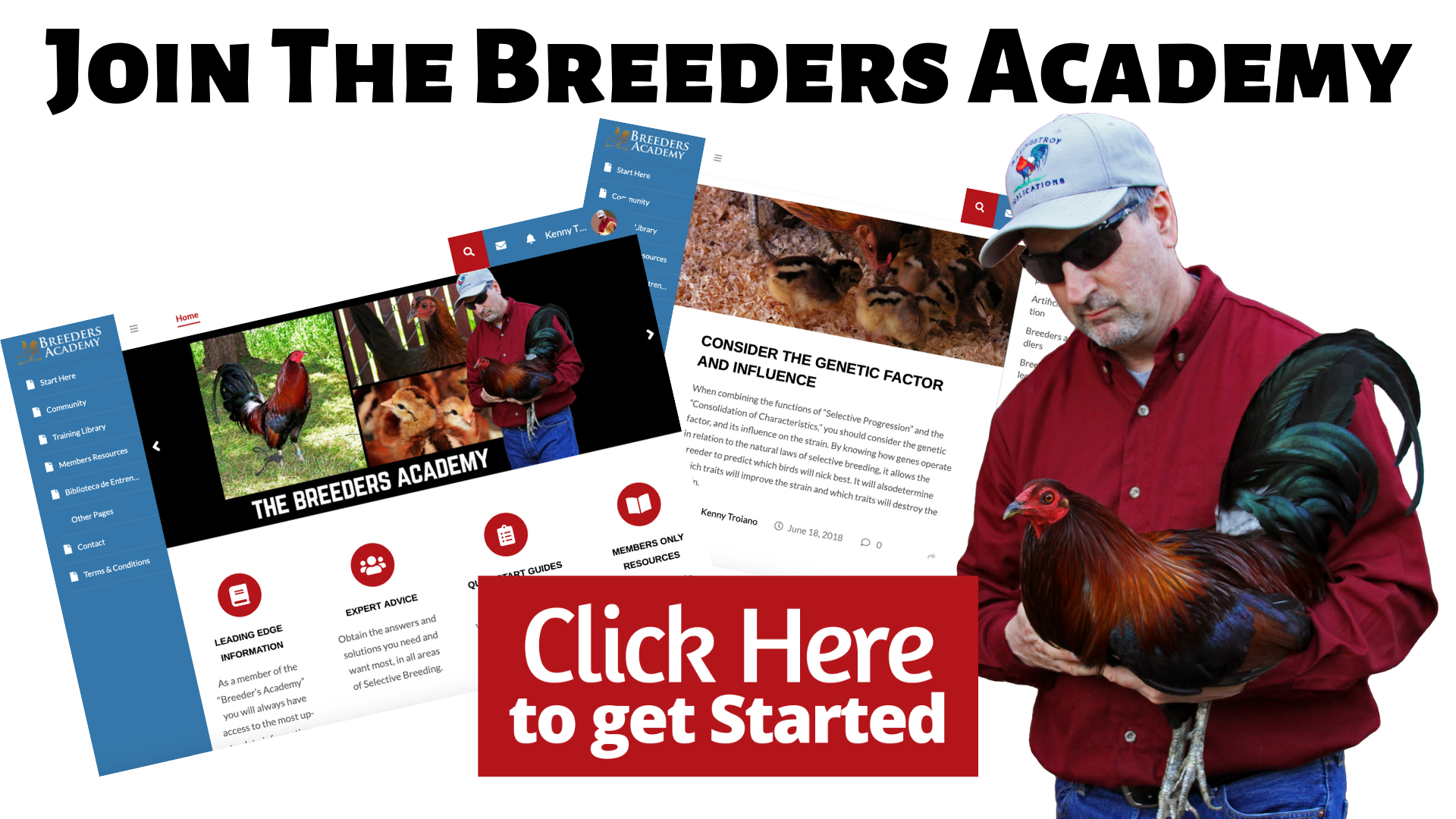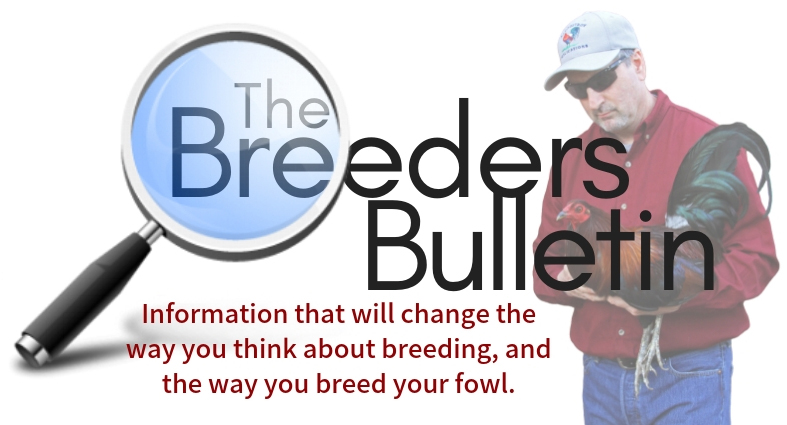By Kenny Troiano
Copyright © 2020 – by Kenny Troiano/Maximus Troy Publications
 Summer is here and things are beginning to warm up. If you are like me, you dread this time of year. However, this is not the time to slack off and neglect your fowl. This is the time of year that they need our attention the most.
Summer is here and things are beginning to warm up. If you are like me, you dread this time of year. However, this is not the time to slack off and neglect your fowl. This is the time of year that they need our attention the most.
Soon our fowl will begin to molt (drop old feathers and grow new ones in their place). While in the molt they tend to run a fever. Growing feathers takes up a lot of energy and is very painful. They generally don’t feel very well and will tend to be temperamental. This is the time of year that most cocks become manfighters. Try not to handle your fowl during the molt. If you should need to worm them or take care of other minor problems, it is best to do it before things begin to warm up.
Before the molt, I like to clean up the pens and manage my birds. I do everything that is necessary early in the season, so that I can leave them be until they are finished molting, which is sometime in November. Some birds may finish in December, so make sure their feathers are dry and not full of blood before handling.
Pen individually: I usually start by separating my fowl. Each individual cock and hen is put into their own pen. The last thing a hen needs, and wants, is an active and flirtatious broodcock during the hot molting season. This time a year they just want to be left alone.
Summertime feed mix: During the summer months, I like to adjust my feed mix as well, such as adding more protein and taking away some of the carbohydrates. This means adding more breeder pellet and taking away some of the grains, especially corn.
Protein: Good nutrition is very important during the molt, and protein is essential for proper feather growth and development. Breeder pellet is a great source of nutrition. Normally at 20% protein, it has most of the vitamins and minerals that our fowl needs. It is ok to have some grains, especially for proper digestion, but it should only be used to adjust the protein level. 16 to 18% is a normal protein level for cocks, while 18 to 20% is best for hens, especially during the breeding season. However, 18% protein is a good level for both cocks and hens for proper feather growth during the molting season.
Sunflower seeds: I also like to add more black oil sunflower seeds to the mix. This is a great source for oil, which they also need for proper feather growth and maintenance. During the winter and spring (breeding season), I like to maintain a 3% sunflower content. During the molt, I like to raise it to 6%.
Water: I water in the morning and feed at night (6pm). I do not want their crops to be full of feed during the hottest time of the day.
Make sure they always have fresh water, and try to keep it out of the direct sun. Water is just as important as proper nutrition. Please take this serious. They will not drink water that is warm or taste bad. They need plenty of fresh, clean, cool water during the summer months.
Supplements in the water: If you would like to add vitamins and electrolytes to the water, make sure not to use too much or use it too often. Vitamins and electrolytes are wonderful, if used properly. Once a week, for two or three days is plenty. I will only use it when it is extremely hot. Proper feed mixes usually give them plenty of what they need, but when it is especially hot, I will give them a little vitamins and electrolytes in the water. I will replace it daily and only give it for two days.
Dirt baths: When I water every day, I like to poor the old water in the pens. Watch how they will bathe in the wet dirt. This is also good for proper feather development. It helps to eliminate lice and mites, especially feather mites, and gives the feathers some of the moisture that they need. It also helps to keep them active and cool.
Maintaining good feather condition: As the tail feathers grow and develop, I like to spray the feathers with a soap/shampoo with Pyrethrins. This comes in liquid form at your local feed store and is used for washing horses. Pyrethrins is a flower extract that is safe for animals and humans, but deadly for insects and bugs (external parasites). I will mix it 50/50 with water, and will put it into a spray bottle. Once a week during the summer months, as I walk by the pens, I will spray the tails with this solution. The result is a healthy looking tail that is free from feather mites.

